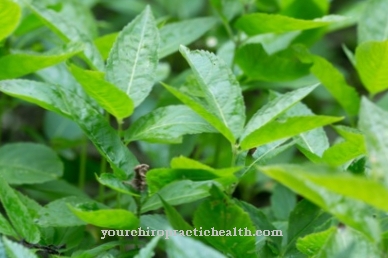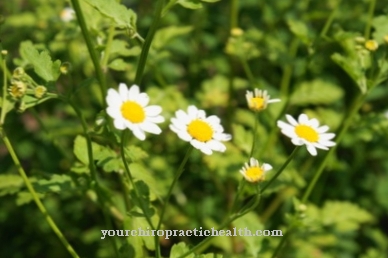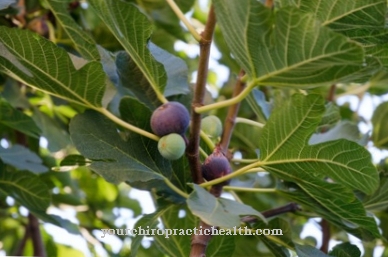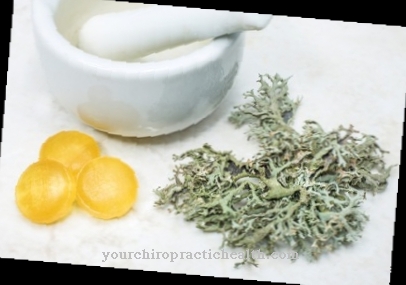mugwort is an inconspicuous, undemanding and widespread herb with interesting uses as a herb and medicinal plant. It belongs to the daisy family from the genus Artemisia. There is a European and an Asian variant of the common mugwort, which differ only slightly in the composition of the ingredients.
Occurrence & cultivation of mugwort

Of the Common mugwort, also simply as mugwort is an uncomplicated plant that does not place high demands on the soil. It is often found in North America, Europe and Asia in overgrown areas such as roadsides, embankments or embankments. That is why it is also considered a weed.
The plant, which belongs to the sunflower family, is also known as a herb and medicinal plant, which is offered in various forms in the trade. Mugwort, a typical root crop weed, was originally spread through the Neolithic agriculture. The ubiquitous occurrence of the plant often makes it difficult to even perceive it as a valuable herb and medicinal plant.
Mugwort reaches a height of up to 2 meters, but its dark leaf color and the inconspicuous flowers can explain the disregard of this herb. But anyone who knows the plant better is happy to be convinced of its advantages. Mugwort is characterized by upright, sparsely hairy stems, from which laterally panicle inflorescences and firm, pinnate leaves emerge. The leaves are green on the upper side and gray-whitish on the underside. The mugwort harvest season extends from July to September.
Effect & application
The common mugwort contains many valuable ingredients that make it an interesting herb and medicinal plant. Its main active ingredients are the sesquiterpene lactones and essential oils. Flavonoids, hydroxycoumarins, polyines, triterpenes and carotenoids can also be found in smaller concentrations. Sesquiterpene lactones are very effective against bacteria, fungi, worms and parasites.
In higher concentrations they are also effective against mammals. In the plant, they function as defense substances. This group of substances is responsible for the herb's bitter taste. On the other hand, due to its antibacterial or antifungal properties, it develops the healing properties of mugwort. The plant also contains 0.2 percent of a complex mixture of essential oils, such as camphor, thujone, 1,8-cineole and linalool.
Camphor promotes blood circulation and loosens mucus. In higher doses, it can also lead to anxiety and agitation. However, the active ingredients in mugwort are in physiologically tolerable concentrations, so that the plant is often used as a spice or medicinal plant. Mugwort was already known as a medicinal plant in ancient times and was even considered the mother of all medicinal plants in the past.
Various mugwort teas are made today. The tea is prepared as an infusion and left to steep for 2-3 minutes. Depending on your needs, 1-3 cups of mugwort tea can be drunk per day. However, due to the high effectiveness of the ingredients, overdosing should be avoided. After 6 weeks of continuous use, a three-week break should be taken.
In Chinese medicine mugwort is used for moxibustion. During the moxibustion, mugwort leaves are lit in the form of small cones and the smoldering moxa cones are placed on specific acupuncture points. There they generate heat and thus act on the corresponding acupuncture points.
Mugwort is also often used as a spice in the kitchen. The spice develops the characteristic bitter taste and ensures better digestion, especially with fatty dishes. At the same time, it promotes appetite. The production of gastric juice and bile is stimulated. For the use of mugwort, the entire plant is used from the roots to the leaves to the flowers.
Importance for health, treatment & prevention
Mugwort is of great importance for health. As already mentioned, its healing properties were already known in ancient times. Mainly the contained sesquiterpene lactones are responsible for its effectiveness against bacteria, fungi, worms and parasites. The complex essential oil also works in this direction. Besides, it also promotes blood circulation and mucus loosening.
So mugwort has, among other things, antibacterial, antifungal, digestive, appetite-stimulating and blood circulation-promoting properties. It is used for symptoms such as indigestion, bladder infections, gynecological diseases, biliary weakness, circulatory disorders or nervous disorders. Due to the many ingredients, diverse effects are also to be expected. The active ingredients in mugwort are in a tolerable concentration. However, side effects can of course also occur with an overdose.
Therefore, no more than three cups of mugwort tea should be drunk per day. Regular use of the tea over six weeks should then be interrupted for about three weeks. This is the only way to ensure the effective health effects of mugwort. It has a preventive effect on many diseases. Its digestive effect is particularly worth mentioning here. Many symptoms, such as bloating, gas, diarrhea or constipation can be prevented by using mugwort teas or mugwort spices.
The tea also has a calming effect. When rubbed in, mugwort oil has a soothing effect on rheumatic diseases. However, it must also be noted that there are people who are allergic to mugwort. This can trigger asthma attacks, for example. Some very sensitive people also react very intensely to mugwort and can therefore only use it in very small amounts. #
Furthermore, attention should also be paid to the dosage during use. Too high a dosage can lead to unpleasant side effects. Mugwort should also not be used in the event of a fever or during early pregnancy.



























